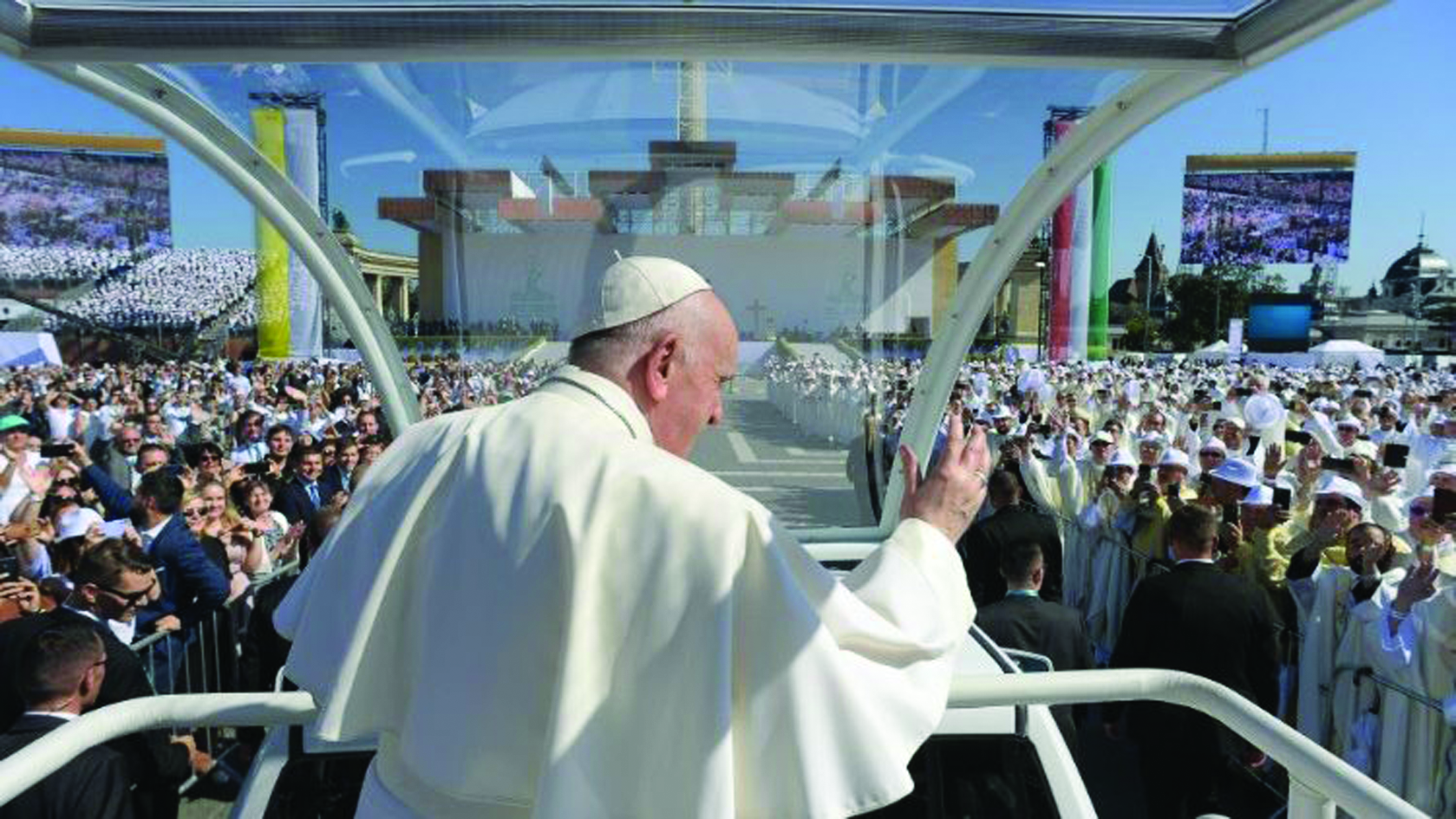“A miracle which will amaze the world!” In these few and mysterious words, the second miracle in Blessed John Paul II’s canonization process was being described earlier this year by people close to the cause. Then came rumors among Vatican correspondents that the chosen case involved a miracle in Costa Rica: a woman healed from severe brain damage. Then, on July 5, Pope Francis promulgated a decree approving the second miracle attributed to the intercession of the late Polish pontiff, thus opening the path to his canonization. That same day, in Costa Rica, Floribeth Mora Diaz, the woman miraculously healed through the intercession of Karol Wojtyła, held a press conference. (By coincidence, at the same time Pope Francis was signing the decree, in the Holy See Press Office the presentation of his first encyclical, Lumen Fidei, was taking place.)

Msgr. Sławomir Oder, postulator of Blessed John Paul II’s canonization cause (Galazka photo)
Unlike the process of beatification, which was chronicled step by step in the press, the cause of canonization proceeded rather quietly. There were articles about the cause, but brief ones, saying only that a second miracle, the last needed element to conclude the process and to declare the Polish Pope a saint, had been chosen. Even now, before the official announcement of the ceremony’s date, at the Vatican no one wants to officially confirm which miracle was chosen. Only the woman herself and the Archbishop of San José, Costa Rica, José Rafael Quiros, have spoken about the case.
The miracle from Costa Rica is “amazing” for two reasons. It took place on May 1, 2011, precisely the day John Paul II was beatified in Rome. The miracle also converted the woman’s family.
Floribeth Mora Diaz, 50, was suffering from a severe aneurysm which had developed in April 2011. The doctors didn’t give her any chance of survival, and after many examinations asked her husband to take her back home to die quietly. Both started to pray to John Paul II asking for a miracle. She was able to watch a live broadcast of the beatification Mass on television. When she woke up the next day, she felt very well. Many exams showed that she had completely recovered from the disease without any damage to her brain.
At the suggestion of her parish priest, she wrote an e-mail to Msgr. Sławomir Oder, postulator of the cause. But the text itself was very enigmatic and signed only with her name. He wrote back to ask for more details. So, a process of detailed exams and study began, and after some months the case passed to three commissions: one of doctors, one of theologians and finally one of cardinals and bishops, who approved the miracle on July 2. Only three days later, the decree on the miracle was presented to the Pope for promulgation.
Surprisingly, the decree on the second miracle attributed to the intercession of Blessed John Paul II was not the only decree regarding a pontiff Pope Francis signed that day. The Pope’s second decision was to accept the cardinals’ request to canonize Pope John XXIII, dispensing with the requirement of a second miracle. (During 2013, the Catholic Church is celebrating the 50th anniversary of the Second Vatican Council, which began in 1963. John XXIII also died in 1963.)

The tapestry with the image of Pope John XXIII, beatified by Pope John Paul II during a ceremony in St. Peter’s Square, September 3, 2000 (CNS photo).
The date for the canonizations — for economic reasons, it appears they will be celebrated on the same day — has not yet been announced, and we must wait for the Pope’s decision, which will be made public at a consistory (meeting with the cardinals) in September. After the hypotheses of three possible days — October 20; November 24; and April 27, 2014 — a fourth date, December 8, began to circulate, as December 8 has a profound Marian aspect.
At Pope John Paul II’s funeral in St. Peter’s Square in 2005, thousands chanted “Santo subito” (“Make him a saint immediately”). Now his process will go down in history as an extraordinarily speedy one. His successor, Pope Benedict XVI, just 26 days after John Paul’s death, on April 28, 2005, allowed the process to begin immediately, dispensing with the ordinary 5-year period required by canon law after the death of the candidate. The decision was announced at the end of a meeting with Roman clergy on May 18, 2005, to great applause. John Paul II will now be one of the saints canonized the fastest after their beatification. (Another speedy process was the cause of St. Padre Pio from Pietrelcina.) The uniqueness of the canonization process of John Paul II is that he was beatified by his direct successor, his trusted collaborator and friend. Now the canonization will be by Francis, made a cardinal by Pope Wojtyła.






Facebook Comments